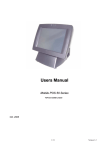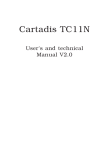Download RV5000 SERIES USER MANUAL
Transcript
RV5000 SERIES USER MANUAL Firmware Version 2.2.0.62 Yeastar Technology Co., Ltd. 2014/02/17 Installation Notes: Please be advised of the following tips before using your NVR: Keep all liquids away from the NVR. Place the NVR in a well-ventilated environment. Ensure NVR is running within the allowed humidity and operating temperature. It will lead to shorting when dust on the circuit board of NVR gets damp; please dedust regularly with banister brush regarding the circuit board, connector, chassis and chassis fan. Improper replacement of the battery may result in hazard of explosion. Direct replacement conducted by users is prohibited. Replace with the same or equivalent type only. Note The equipments mainly mentioned in this manual are RV5000 Series NVRs, including RV5004, RV5008, and RV5016. Content 1. Product Introduction ..................................................................................................................... 1 1.1 Introduction ......................................................................................................................... 1 1.2 Product Key Functions ........................................................................................................ 1 2. Hardware ....................................................................................................................................... 3 2.1 Panel Buttons and Lights Instructions ................................................................................. 3 2.2 Using a USB Mouse ............................................................................................................ 3 2.3 IR Remote Controller .......................................................................................................... 4 3. Local Operation............................................................................................................................. 6 3.1 Wizard Setting ..................................................................................................................... 6 3.2 Playback .............................................................................................................................. 8 3.2.1 Video Playback......................................................................................................... 8 3.2.2 Picture Playback ..................................................................................................... 14 3.3 Camera Settings ................................................................................................................ 17 3.3.1 Camera Management ............................................................................................. 17 3.3.2 Camera Search ....................................................................................................... 23 3.3.3 PTZ Configuration ................................................................................................. 25 3.4 Record Settings ................................................................................................................. 33 3.4.1 Record Mode .......................................................................................................... 34 3.4.2 Record Schedule Setting ........................................................................................ 36 3.5 Event Settings ................................................................................................................... 41 3.5.1 Video Loss Setting ................................................................................................. 41 3.5.2 Motion Detection Setting ....................................................................................... 45 3.6 State................................................................................................................................... 50 3.6.1 Device Information ................................................................................................ 50 3.6.2 Network Status ....................................................................................................... 50 3.6.3 Camera Status ........................................................................................................ 51 3.6.4 Disk Status ............................................................................................................. 52 3.6.5 Event Status............................................................................................................ 52 3.7 Live View Settings ............................................................................................................ 54 3.7.1 Live View ............................................................................................................... 54 3.7.2 Layout Configuration ............................................................................................. 55 3.7.3 More Settings ......................................................................................................... 56 3.8 System Settings ................................................................................................................. 57 3.8.1 General Setting ....................................................................................................... 57 3.8.2 Network Settings .................................................................................................... 58 3.8.3 Disk Management .................................................................................................. 63 3.8.4 Holiday Configuration ........................................................................................... 65 3.8.5 User Account Settings ............................................................................................ 66 3.8.6 Upgrade .................................................................................................................. 68 3.8.7 Save/Load Configuration ....................................................................................... 70 3.9 Shutdown .......................................................................................................................... 72 3.9.1 Logout .................................................................................................................... 72 3.9.2 Reboot .................................................................................................................... 72 3.9.3 Shutdown ............................................................................................................... 72 3.9.4 Close....................................................................................................................... 72 1.Product Introduction 1.1 Introduction RV5000 Series are positioned at management and storage application of HD video data, and own multi-disc management systems, front end HD device management system, HD video analysis system and high-capacity system for video. It adopts the technology of high flow capacity data network transmitting&transmission, with multi-channel video decoding, to achieve functions like intelligent management, safe storage, HD decoding etc. 1.2 Product Key Functions Basic Information RV5000 Series are NVRs, can work with IP camera, IP dome and DVS; can connect with third party IP cameras. Each channel supports dual stream up to 1080P/720P/UXGA/VGA resolution. Each channel supports timing and event compression parameters, can configure sub stream compression parameters at LAN. Monitoring Supports HDMI video output, can live view and play back separately. For HD HDMI display, maximum to 1920*1080p resolution. Supports 1/4/8/8_1/9 screen live view, channel sequence is adjustable. Supports live view fast menu operating. Supports live view group switch, manual switch and automatic patrol, the interval of automatic sequence can be adjusted. Supports motion detection, video loss alert. Supports various PTZ protocols, PTZ preset, auto patrol and patrol pattern. Supports central zoom in by clicking the mouse at arbitrary area. HDD Management RV5000 Series can support 2 SATA HDD. Supports S.M.A.R.T technology. Recording/Snapshoot and Playback Support holiday’s time. Support recycle and non-recycle recording mode. Support multiple recoding types, including timing, alarm, motion detection, motion or alarm, motion and alarm, etc. Support 12 recording time periods with separate recording types. Support pre-record and post-record time for motion detection or snapshot, alarm recording or snapshot, motion and alarm recording, motion or alarm recording. And supports pre-record for manual and timing. Supports local recording/snapshot. Supports digital zoom function at arbitrary area in playback. Supports video data playback. Supports pause, fast play, slow play, skip forward, and skip backward when playback, locating in progress bar by dragging the mouse. Supports multi channels (up to 8 channels) playback. Supports snapshot manually. Backup Supports USB port backup. Supports FAT32 format backup Supports backup device maintenance and management. Alarm & Exception Supports video loss alarm, motion detection alarm. Supports various alarm response such as audible warning, send email, camera motion detecting, on/off relay Other Functions˖ ˖ Supports multi-level user management, administrator can create multiple users with access rights. Supports manual triggering and clearing of alarms. Supports operation of configured information import/export. Network: RV5000Series supports 100M/1000M adaptive network interface, Supports IPv4 protocol Supports TCP/IP protocols, PPPoE, DHCP, DNS, DDNS, NTP, and SMTP, etc. Supports unicast and multicast, support TCP, UDP, and RTP for unicast. Supports remote search, playback and download of video files, support breakpoint resume. Supports remote acquiring and configuring of parameters, support remote import and export of device parameters. Supports remote acquiring of device status, system log and alarm status. Supports remote button operation. Supports remote operate system maintenance by format of hard disk, upgrade, and reboot, etc. Supports upload alarm and exceptions to remote host. Supports remote manual start or stop of recording. Supports remote manual start or stop of alarm output. Supports remote BMP image capturing. Supports remote PTZ control Buit-in WEB Server 2. Hardware 2.1 Panel Buttons and Lights Instructions NO. Item Description 1 POWER 2 USB Ports USB ports for additional devices such as USB mouse, USB flash drive and USB HDD. 3 IR Receiver Receiver for IR signal. Powers NVR on/off. 2.2 Using a USB Mouse Item Left Button Click Single- click Live view: select the channel and show the live view fast menu interface. Menu: select and confirm. Double-click Switch between single screen to multi-screen when in live view mode and playback mode. Click and drag Right Button Scrollwheel Description Single-click Scroll up Scroll down (1) Control rotation direction in PTZ mode. (2) Set the target area in tamper-proof, motion detection and privacy mask alarm settings. (3) Drag the digital zoom area. (4) Drag the channel and the time scroll bar. Live view: shows pop-up menu. Menu: escape and go to previous menu. Scroll up the page. Scroll down the page. 2.3 IR Remote Controller F-2.3 NO Name 1 POWER 2 DEV ABC/123 Description Power on/off the NVR Enables/disables remote control (1)Alphanumeric buttons are used to switch the corresponding channel in live view or PTZ Control mode. 3 (2)Alphanumeric buttons are used to input numbers and characters in edit mode. EDIT 4 (1)Used to enter the edit state. (2)Delete the character in front of the cursor. (3) Open up the IRIS of the camera when in PTZ state. 5 A (1)Switch the input methods including figure, letters and symbols. (2) Auto scan when in PTZ control. REC (1)The REC/SHOT button is used to enter recording configuration interface. (2)When controlling a PTZ, press the REC/SHOT Button to invoke preset 6 positions. (3)Open and close sound system when playback. 7 8 9 PLAY (1)Enter the playback interface. (2)Auto scan when in PTZ control. INFO DISPLAY Zoom control when in PTZ control. (1)Switch between main and spot output. (2)To zoom the camera in PTZ mode. MENU (1)Enter the main menu interface. (2)Display/cover playback toolbar when in playback state. 10 (3)Open/close the sound of front panel by pressing and holding more than 3 seconds. 11 PREV (1)Used to switch between single screen and multi screen mode. (2)Adjust the focus in PTZ mode. DIRECTION/ ENTER (1)Move the active selection in a menu, select menu items setting. (2)Up/down button stands for single frame fast forward/playback, left/right button stands for speed up/slow down the video. 12 (3)Switch live view channel or screen in live view mode. (4)Move the PTZ when in PTZ control. PTZ (1)Confirm selection in menu modes. (2)Switch to tick checkbox and ON/OFF. 13 (3)In playback mode, can be used to play or pause the video. (4)In cruise mode, press to pause/restart the cruise. 14 ESC 15 RESERVED F1 16 Same as ESC button on front panel Reserve the settings (1)Select all items on the list. (2)Control light status when in PTZ control. (3)Switch to playback or sequence play in playback state 17 PTZ CONTROL To adjust the iris, focus and zoom of a PTZ camera. 18 F2 The F2 button is used to switch menu attribute page. 3. Local Operation 3.1 Wizard Setting By default, the Setup Wizard will start once the NVR has loaded. The Setup Wizard will guide you complete some important settings to make sure the device function well. You can choose if you will enable wizard when device starts. Please complete the configuration as following: Step1. Input the admin password Admin password (The default password is 123456) If you want to modify the admin password, input the new password. F-3.1.1 Step2. Date and time setting Select the Time Zone and Date Format or you can set date and time manually. 6 Step3. Network setting F-3.1.2 Input the IP Address, Subnet Mask, Gate Way and Preferred DNS Server. F-3.1.3 Step4. Login Input the username and password. (The default password is 123456) 7 F-3.1.4 3.2 Playback To play and backup the recorded files in specified time period. 3.2.1 Video Playback It can support playback according to recorded time. Play recorded files in specified time period; synchronous playback of multi channels is supported. Step1. Enter Video Playback Interface shown in F-3.2.1 by clicking Main menuÆ ÆPlayback ė 8 F-3.2.1 Step2. Select a desired channel and date Select playback layout and channel. Click the date in red when there are recorded files of the selected channels, the record type with recording data will be show as below, and then click to playback. F-3.2.2 Note: 1. The day in red has recording files; please select the date in red to playback. 2. 16 channels can be selected to playback synchronously. 9 Video Playback Tool Bar Description Button Description Button Description Button Description Button Description Rewind Stop Play Pause Reverse Step Forward Step Fast Backward Fast Forward Next 4 Cams Timeline Backward Timeline Forward Timeline Zoom In Timeline Zoom Out Timeline Playback Position Timeline Cutting Timeline Cut Off Audio On Audio Off Snapshot Backup Previous Cams 4 10 3.2.1.1 Video Files Backup Regular recorded files can be backed up by various devices, such as USB flash drives (USB flash disk, USB HDDs, USB writer), CD/DVD writer and eSATA, etc. ėPlaybackė Satep1.Enter video playback interface by clicking Main menuė F-3.2.3 Step2.Select Recorded files for Backup Select the channel and date you want to backup, click , then select the start time at time line and click F-3.2.4 11 Select the end time at time line and click F-3.2.5 Step3.Click enters to backup interface, select Backup media and click [Backup]. F-3.2.6 12 Step4. The pop-up window will prompt: Please wait… F-3.2.7 Step5. When all backup files have been exported, ‘Backup Success’ will be prompted. F-3.2.8 13 3.2.2 Picture Playback Search and look for the snapshoot files saved in HDD. ÆPlaybackė Step1.Enter Picture Playback Interface by clicking Main menuÆ Select a desired channel, start time and end time, click [Search] F-3.2.9 Step2. Enter Picture Info List, Look up the Pictures. Click to play the desired pictures. Or click to auto play the picture. F-3.2.10 14 Picture Playback Tool Bar Description Button Description Button Description Button Description Button Backward Play Play Backup pictures Close Previous Picture Description Next Picture 15 3.2.2.1 Picture Files Backup Step1: Select pictures you want to backup in picture playback interface. F-3.2.11 Step2: Select backup media and click to save picture. F-3.2.12 16 3.3 Camera Settings Before configuration, please ensure that the IP device is connected to the same network as your NVR and that the network setting for your NVR is properly setup. 3.3.1 Camera Management Step1.Enter camera management interface by clicking main menu Æ Camera Æ Camera Management enter camera management interface. F-3.3.1 Step2.Add IP Channel Method1. Add IP Channel in camera search interface 1.Enter to camera search interface by clicking Main MenuėCameraėCamera Search. 17 F-3.3.2 2. Click [search] button to quickly search the IP devices that support ONVIF at the same network segment with NVR. F-3.3.3 18 3. Double click the channel, input password and click [Add] button. F-3.3.4 Or Check to bulk adding the IP cameras if they are with same password. F-3.3.5 19 Method2. Add IP Channel in camera management interface 1.Enter to camera management menu by clicking Main MenuėCameraėCamera Management F-3.3.6 2. Select ‘IP Channel’ attribute page, select idle channel then input complete information Click [Add] button. F-3.3.7 Step3.Check the connection status After adding the IP channels, click [Refresh] button, the [state] will show [connected] as below, 20 If not, you need to check if the network is connected or whether the user name, password is correct or not. F-3.3.8 Step4.Configure IP Channel 1. After successfully adding the channel, click or double-click this channel to re-edit the channel info, address, and password, etc. F-3.3.9 Note: By default, the user name and password entered here are the default user name and password. The management port is 80 and the default Transport protocol is UDP. 21 2. Select [Parameters] attribute page to re-edit this channel parameters. Click [Save] to save the configuration F-3.3.10 3. You can delete this IP channel by clicking F-3.3.11 22 3.3.2 Camera Search You can search and add IP cameras here Step1.Enter camera search interface by clicking Main menu Æ Camera Æ Camera Search F-3.3.12 Step2.Click [search] button to quickly search the IP devices that support ONVIF at the same network segment with NVR. F-3.3.13 ˖ Note˖ The IP devices found in the list are those that support ONVIF protocol and in the same network segment with NVR. 23 Step2.Add IP Camera Double click the channel, input password and click [Add] button. F-3.3.14 Or you can bulk adding the IP cameras if they are with same password. Click [OK] to finish bulk adding. F-3.3.15 24 3.3.3 PTZ Configuration 3.3.3.1 PTZ control Parameters Configuration Note: Settings for a PTZ camera must be configured before it can be used. Make sure that the PTZ and RS-485 of the NVR are connected properly. Step: Enter configuration interface by clicking Main MenuÆ Æ CameraÆPTZ Configuration, select “Configuration” page Select a channel and set the PTZ parameters. You can click [Copy] to copy the same configuration to other channels. F-3.3.16 Note:.The PTZ protocol and address of IP channel must be consistent with those of the PTZ decoder. 25 3.3.3.2 Advanced Configuration There are two patrol ways can be set: Track Patrol and Tour Patrol Note: 1. IP channel does not support configuration and calling of presets, patrols and patterns. 2. The functioning of presets patrols and patterns need front PTZ decoder to support. Æ CameraÆPTZ Configuration, select “Advanced” page Route: Main MenuÆ *Presets Point Setup Preset can be set to move your PTZ camera to a desired preset location. The preset point is the preparation for Tour Patrol. Step1. Use the PTZ direction key to rotate the position of preset. Then select “Set Preset Point”, and select a preset number to finish a preset point setting. Repeat above steps to set more preset points. F-3.3.17 26 Step2. Click to save or call more preset points after number 17. F-3.3.18 Step3. Select ‘Clear Preset Point’ and click a preset number to delete the preset point. F-3.3.19 27 Step4. Select “Goto Preset Point”. Click a preset number to check the preset point. F-3.3.20 * Tour Patrol The camera will patrol according to the key points. The total time and patrol speed of the tour is variable. Step1. Select a tour. Up to 6 tours could be set. F-3.3.21 28 Step2. Click to add key points. Set the key point parameters (including preset point number, scan time and scan speed) and click [OK]. F-3.3.22 Step3. Repeat the above steps to add more key points to the tour patrol. Step4. Select a key point, select [Delete] and select [Yes] in the dialog box to delete it. F-3.3.23 29 Step5. Click to preview the tour patrol. Click to stop. Step6. Click and select [Yes] in the dialog box to delete all key points of the tour patrol. F-3.3.24 Note: 1. The key point decides the patrol path, which will run according to numerical order of the key points. 2. Scan time is how long the patrol stays on the preset point. 3. Scan speed is the rotate speed of speed dome from one preset point to the next. 30 * Track Patrol The camera will patrol back and forth in a constant speed. There are only a start point and an end point. Step1. Select a track and click . Up to 8 tracks could be set. F-3.3.25 Step2. Drag the mouse or click 8 direction keys of mouse control field to rotate PTZ. F-3.3.26 Step3. Click to save the PTZ movement patterns to the Track Patrol. Step4. Click to preview the track patrol. Click to stop. 31 3.2.3.3 PTZ Control Operation In live view mode, select quick menu of live view channel to enter PTZ control mode. It can access PTZ control by PTZ control bar or panel PTZ control button. Description of PTZ Control Bar F-3.3.30 Icon Description Icon Description Icon Description PTZ Direction Control and Auto Scan Button Adjust Zoom+,Focus+ ,IRIS+ Adjust Zoom-,Focus-, IRIS- Zoom: Zoom in or out Focus IRIS Horizontal Movement Adjustment Vertical Movement Adjustment Zoom Adjustment Focus Adjustment 32 3.4 Record Settings Preparation for Configuration Step1.Ensure your NVR has Install and initialize the HDD. Enter disk management interface by clicking System SettingsėDisk Management F-3.4.1 Step2. Ensure that HDD has sufficient storage space. Enter disk management interface by clicking System Setting ė Disk Management. Select [Recycle Mode] to ON in the case of insufficient capacity of HDD. F-3.4.2 33 3.4.1 Record Mode Step 1. Enter to record mode menu by clicking Main Manuė ėRecordėRecord Mode. There are three record modes: No Recording/Always Record/Record by Schedule. You can select desired one to every channel. F-3.4.3 Step2. Click [More] to setup recording general setting. F-3.4.4 34 Illustration for Parameters [Prev Record Enable]: Enable/Disable the event pre-record before event alarm. [Duration Time]: Event pre-record duration before event alarm [Post Record Enable]: Enable/Disable post record after the event is over [Audio Record]: Select to record audio or not [Record Stream Type]: Select Main stream or sub stream for record Step3.Click [Copy] to copy settings to other channels, and then click [OK]. F-3.4.5 Step4. Click [Apply] to save the configuration 35 3.4.2 Record Schedule Setting Note: The days are devided as Holiday/Sunday/Monday/Tuesday/Wednesday/Thursday/Friday/ Saturday. The schedule of Holiday is superior to other days. To set the holiday information, go to Chapter.3.8.4. Method 1. General Setting ėRecord Schedule Step1.Enter Record schedule interface by clicking Record Settingsė F-3.4.6 Step2.Select desired channel (eg.Channel 1) and click [Edit] button F-3.4.7 36 Step3.Set record schedule Select a day from the drop-down list of [Day], and select [Record Type] to setup the recording period, up to 12 periods can be set. (eg.01:00 to 05:00 for none recording; 06:00 to 18:00 for timing recording; 19:00 to 21:00 for Motion recording; 22:00 to 24:00 for Alarm recording) F-3.4.8 Note: Time periods cannot overlap with each other. Step4.Click [Copy] to copy settings to other weekdays, and then click [Apply] to confirm the setting. F-3.4.9 37 Step5.After above steps, this channel with show as below: F-3.4.10 Step6.Copy the recording settings to other channels Select [Copy] to copy the same settings to other channels. And click [OK] to save the configuration. F-3.4.11 Step7.Save the configuration Click [Apply] button to save the configuration, and then click [Back] to return to the previous menu. 38 Method2.Set record schedule by drag the mouse ėRecord Schedule Step1.Enter Record schedule interface by clicking Record Settingsė F-3.4.12 Step2.Click desired channel and record type show as below: F-3.4.13 39 Step3.Drag the mouse to draw certain areas in recording setting zone, and then click [Apply] to save the configuration. F-3.4.14 Step4.Copy the recording settings to other channels. Select [Copy] to copy the same settings to other channels. And click [OK] to save the configuration. F-3.4.15 40 3.5 Event Settings 3.5.1 Video Loss Setting Your NVR can be setup to detect video loss and trigger an action. ėEventėVideo Loss . Step1.Enter video loss configuration interface by clicking Main Menuė F-3.5.1 Step2.Select a desired channel and click [Edit] to configure video loss. F-3.5.2 41 Step3.Select effective time to setup when you want to trigger actions once video loss is detected. [Never]: Your NVR will not trigger any actions when [Never] button is checked. No matter the [Audible Warning] or [Email Linkage] checkboxes are checked or not. [Always]: Your NVR will always trigger actions when [Always] button is checked. Please make sure [Audible Warning] or [Email Linkage] is checked. [By Schedule]: You can drag the mouse to draw certain area in schedule setting zone, show as below: F-3.5.3 After dragging this will show as below: F-3.5.4 42 Or click [Edit Time] to set schedules. Schedule can be set for all week or any day of the week with up to 12 time periods per day. Video loss actions take effect in the scheduled period only. F-3.5.5 Note: Time periods cannot overlap with each other. Step4.Click [Copy] to copy the video loss schedule to other weeks, and then click[OK]. F-3.5.6 43 Step5: Select actions you want when video loss is detected. [Trigger Alarm Output]: Select whether trigger the alarm output or not when video loss is detected. Audible Warning: Trigger an audible beep when video loss is detected Email Linkage: Send video loss note to specified email address when video loss is detected. (Please refer to 3.8.2.4 Mail configuration for mail address setting) Note: These actions will only take response according to effective time you choose Step6. Click [OK] or [Apply] to confirm the settings. Repeat above steps for other channels. Or click [Copy] to copy settings to other channels. F-3.5.7 44 3.5.2 Motion Detection Setting Your NVR can be setup to detect motion and trigger an action. Before configuration, please make sure your IP cameras have enable motion detection features. Step1.Enter motion detection setting interface by clicking Main Menuė ėEventėMotion Detection. F-3.5.8 [Trigger Channels Record]: Select channels to trigger for recording when motion is detected by checking the checkboxes under the desired channels. Please make sure other channels has setup motion recording schedule. 45 Step2. Select the desired channel and click [Edit] to configure motion detection. F-3.5.9 Step3. Select effective time to setup when you want to trigger actions once motion is detected. [Never]: Your NVR will not trigger any actions when [Never] button is checked. No matter the [Audible Warning] or [Email Linkage] checkboxes are checked or not. [Always]: Your NVR will always trigger actions when [Always] button is checked. Please make sure [Audible Warning] or [Email Linkage] is checked. [By Schedule]: You can drag the mouse to draw certain area in schedule setting zone, show as below: F-3.5.10 46 After dragging, this channel will show as below: F-3.5.11 Or click [Edit Time] to setup schedules. Schedule can be set for all week or any day of the week with up to 12 time periods per day. Motion detection actions take effect in the scheduled period only. F-3.5.12 Note: Time period cannot overlay with each other 47 Step4.Click [Copy] to copy the motion detection schedules to other weekdays. F-3.5.13 Step5. Select actions you want when motion is detected [Audible Warning]: Trigger an audible beep when motion is detected [Email Linkage]: Send motion detection note to specified email address when motion is detected. (Please refer to 3.8.2.4 Mail configuration for mail address setting) Note: These actions will only take response according to effective time you choose 48 Step6. Click [Apply] or [OK] to confirm settings. Repeat above steps to other channel. Or click [Copy] to copy settings to other channel. F-3.5.14 49 3.6 State You can have a quick view of the information of the device, network, camera, disk and event. This part is only for your rapid reference. If you want to make any configuration, please go to corresponding parts accordingly. 3.6.1 Device Information Step: Enter Device information menu by clicking Main MenuÆ ÆStateÆDevice Information It will show you information in F-3.6.1, including: Device ID, Device Name, Hardware Version, Software Version, and Serial Number. F-3.6.1 3.6.2 Network Status Step: Enter Network Status menu by clicking Main MenuÆStateÆNetwork Status It will show you information in F-3.6.2, including: Connection, Mode, DHCP, MTU(B), IP Address, Net mask, Gateway, MAC, Preferred DNS Server, Alternate DNS Server, Receive Rate, and Send Rate. 50 F-3.6.2 3.6.3 Camera Status Step: Enter camera status menu by clicking Main MenuÆ ÆStateÆCamera Status It will show you information in F-3.6.3, including: Channel, Name, Enable, IP Address, Record, Frame Rate, Bitrate, Resolution and State. F-3.6.3 51 3.6.4 Disk Status Step: Enter disk status menu by clicking Main MenuÆ ÆStateÆDisk Status It will show you information in F-3.6.4, including: Port, Vendor, State, Total (GB), Free (GB), HDD Type, In Use, and Recycle Mode. You can see the Total Capacity (GB) and Available Capacity (GB) as below: F-3.6.4 3.6.5 Event Status 3.6.5.1 Alarm Status Step: Enter alarm page by clicking Main MenuÆStateÆEvent Status It will show you the Alarm Input List in F-3.6.5. 52 F-3.6.5 3.6.5.2 Camera Event Status Step: Enter camera event page by clicking Main MenuÆ ÆStateÆEvent Status. It will show you the camera event status in F-3.6.6. If the shows in red, it means the corresponding project is active. F-3.6.6 53 3.7 Live View Settings 3.7.1 Live View Watching a Live View There are multiple icons on each channel displayed in live view mode, indicating the recording and alarm status of the channel. Icons Descriptions Indicates video loss or tampering alarm Indicates motion detection alarm Indicates the current channel is recording. The recording may have been started manually, from a schedule, motion detection, alarm, and/or triggered from motion and alarm. Indicates exception alarm and recording. Use the Right Button of the Mouse in Live View F-3.7.1 Item Menu Description Enter main menu The channel chosen will spread the whole screen. You could also reveal this function by double clicking the channel. Sub Screen Ctrl Switch to sub screen to operate. Single Screen Previous Screen Switch to the previous screen Next Screen Sequence Sub Sequence Logout Switch to the next screen Enable single/multi screen cruise in live view mode Enable single/multi screen cruise in AUX live view mode Click it to logout current user account. 54 Quick Operation for Live View Enter the live view interface; left click the channel, the quick menu will appear. Quick menu operations include playback, recording manually, snapshoot, PTZ, zoom, and image configuration. Quick Menu Instructions for Main Output Live View Icon Description Icon Description Icon description Manually recording Image configure PTZ Control Sound on/off Digital zoom Snapshoot by manually Close 3.7.2 Layout Configuration Step1: Enter layout configuration menu by clicking Main MenuÆ ÆLive ViewÆLayout configuration F-3.7.2 55 You can choose single screen/4/ 8 /8-1/9 screens for layout configuration according to your needs and preferences. Step2. Click to close a channel, or click a desired channel (shown F-3.7.3) to add in and then click “Apply” to confirm settings. Click “Reset” to reset the layout. F-3.7.3 3.7.3 More Settings Live View Parameters Settings Step: Enter the more setting interface by clicking Main MenuÆ ÆLive ViewÆMore F-3.7.4 Item Borderline Channel Name Description Borderline ON/OFF Display the channel name Channel Name Color To change the color of the channel name Sequence Interval Set sequence interval in live view mode Separately Configure Layout Skip Blank Page To configure channel order of all layouts respectively Skip blank page in sequence mode 56 3.8 System Settings 3.8.1 General Setting Step: Enter general menu by clicking Main MenuÆ ÆSystem SettingsÆGeneral To setup the general parameters of NVR, including modify the host name, device ID, select resolution, and set system time manually, etc. F-3.8.1 57 3.8.2 Network Settings 3.8.2.1 Basic Configuration Step: Enter the network setting menu to set the network parameters by clicking Main MenuÆ ÆSystem SettingsÆNetwork, select “Basic” page Basic configuration includes working mode, IP address, subnet mask, gateway, MTU, DNS server, etc. F-3.8.2 Notes: 1. Check the DHCP checkbox if there has a DHCP server running in networks. 2. The valid range of MTU is 500~9676. 3. Do not input an IP address conflict with another device. 58 3.8.2.2 PPPOE Configuration Step: Enter PPPOE menu by clicking Main MenuÆ ÆSystem SettingsÆNetwork. Select “PPPOE” page Check the PPPoE checkbox to enable the feature, and then input user name, password and confirm password for PPPoE access. F-3.8.3 Note: PPPoE user name and password can be obtained from your service provider. Once the setup is completed, a connected status will be shown. 59 3.8.2.3 DDNS Configuration If your NVR is setup to use PPPoE to connect public network, you may need to use DDNS (Dynamic Domain Name System) to solve the problems from dynamic IP address. Step:Enter DDNS configuration menu by clicking Main MenuÆ ÆSystem SettingsÆNetwork, Select “DDNS” page Check the DDNS checkbox to enable the feature. Select “DDNS Server”, and input username, password and host name, and then confirm. Click [Apply] for application. Note: “host name” can use letters, figures and hyphen (-), and must begin with letters. F-3.8.4 60 3.8.2.4 MAIL Configuration Check if the SMTP port can be set or not. Please enable SSL/TLS according to actual mailbox. (Some SMTP server needs to secure connection) Steps: Enter Mail configuration page by clicking Main MenuÆ ÆSystem SettingsÆNetworkė Mail Set the Sender E-mail Address, User Name, Password, and SMTP Server. F-3.8.5 Select [Test] to check if the Mail function is workable. F-3.8.6 61 3.8.2.5 More Step: Enter More configuration page by clicking Main MenuÆ ÆSystem SettingsÆNetworkė More F-3.8.7 SSH Port Setting Secure Shell (SSH) has many functions; it can replace Telnet, and also provides a secure channel for FTP, POP, even for PPP. 1. Check the SSH Enable checkbox to enable the feature. 2. Please modify SSH ports according to actual application. Note: The default SSH port is 22. HTTP Port Setting The default HTTP port is 80. Please modify HTTP ports according to actual application. Notes: 1. The default HTTP port for IE browser is 80. 2. HTTP port is used for remote network access. RTSP Port Setting Real Time Streaming Protocol (RTSP) is an application layer protocol in TCP/IP protocol system. 62 The default RTSP port is 554. Please modify RTSP port according to actual application. Note: 1. RTSP port is used for remote network live view. 2. RTSP port valid range is 554 or 1024~65535. 3.8.3 Disk Management 3.8.3.1 Disk Configuration Step: Enter disk configuration menu by clicking Main MenuÆ ÆSystem SettingsÆDisk ManagementėConfiguration Configuration page contains the basic information of the disk, see F-3.8.8. Select a disk and click [Format] to format the disk. F-3.8.8 63 3.8.3.2 S.M.A.R.T Detection S.M.A.R.T detection is a monitoring system of HDD that detects and reports on various indicators of anticipating failures of HDD. Step: Enter S.M.A.R.T configure page by clicking Main MenuÆ ÆSystem SettingsÆ Disk Management ėS.M.A.R.T You can command S.M.A.R.T self-checking function to check the HDD status. Select “Test type”, and click “apply” for S.M.A.R.T detection. F-3.8.9 Note: 1. Test type has “fast” and “full” options. 2. Test Status can be“status good”, “status bad” and “bad tracks exist”. 3. Test result can be“passed” or “failed”. 64 3.8.4 Holiday Configuration It can configure the record or image capture schedule for holidays of the current year. ėHoliday Configuration. Step1.Enter holiday setting menu by clicking System Settingė F-3.8.10 Step2.Edit the holiday schedule Click to open holiday configuration page to modify holiday name, check the ‘Holiday Enable’ checkbox, and then select [style] to setup Start/End date. Then click [OK] to save the configuration and return to holiday configuration page. Click [Apply] to confirm settings. Note: There are Month, Week, and Date in “Style” mode. F-3.8.11 65 3.8.5 User Account Settings By default, your NVR comes with the user name: “admin” and the password: “123456”. The administrator has the authority to add or delete a user account and configure parameters for the user. Add New User Step1: Enter user setting menu by clicking Main MenuÆ ÆSystem SettingsÆUser Click [Add] to enter add user menu, input information for the new user, select user level and click [OK]. F-3.8.12 Note: User name can be comprised of letters and figures. The user level is separated into User and Operator with different authority. Step2: Set user privileges Select the user that has been added and click [limit] button to enter user privilege menu. F-3.8.13 66 Step3. Click to delete a user. F-3.8.14 Step4. Click to edit a user. F-3.8.15 67 3.8.6 Upgrade Your NVR supports firmware upgrade. ÆSystem SettingsÆUpgrade Step1.Enter upgrade menu by clicking Main MenuÆ F-3.8.16 Step2. Search for device, and select the .bin file F-3.8.17 68 Step3. Click [Upgrade] button to confirm the upgrade F-3.8.18 Note: The system will auto reboot after confirming upgrade. 69 3.8.7 Save/Load Configuration 3.8.7.1 Profile Your NVR supports import and export profiles. ÆSystem SettingsÆSave/Load ėProfile Step1: Enter profile menu by clicking Main MenuÆ F-3.8.19 Step2. Select a file and then click [Import] to import files to USB device. F-3.8.20 70 Step3. Select a file and then click [Export] to export files to USB device. F-3.8.21 3.8.7.2 Restore You can restore all parameters to default settings. Step: Enter to restore menu by clicking Main Menu Æ System Settings ÆRestore F-3.8.22 71 3.9 Shutdown F-3.8.23 3.9.1 Logout Click [Logout] to exit the current logon account. 3.9.2 Reboot Click [Reboot] to restart the NVR. 3.9.3 Shutdown Click [Shutdown] to close the NVR. 3.9.4 Close Click [Close] to exit. 72












































































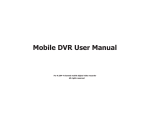

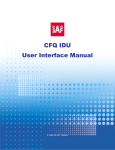
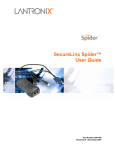
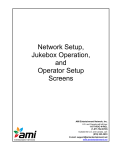

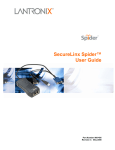
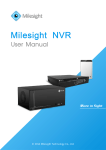
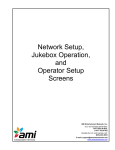
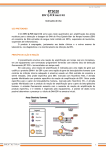

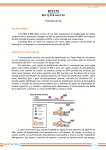
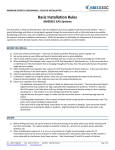
![UK User`s Manual [ Notebook ]](http://vs1.manualzilla.com/store/data/005694610_1-ad8e24898a53e900e9c2a73fa8f500a7-150x150.png)


